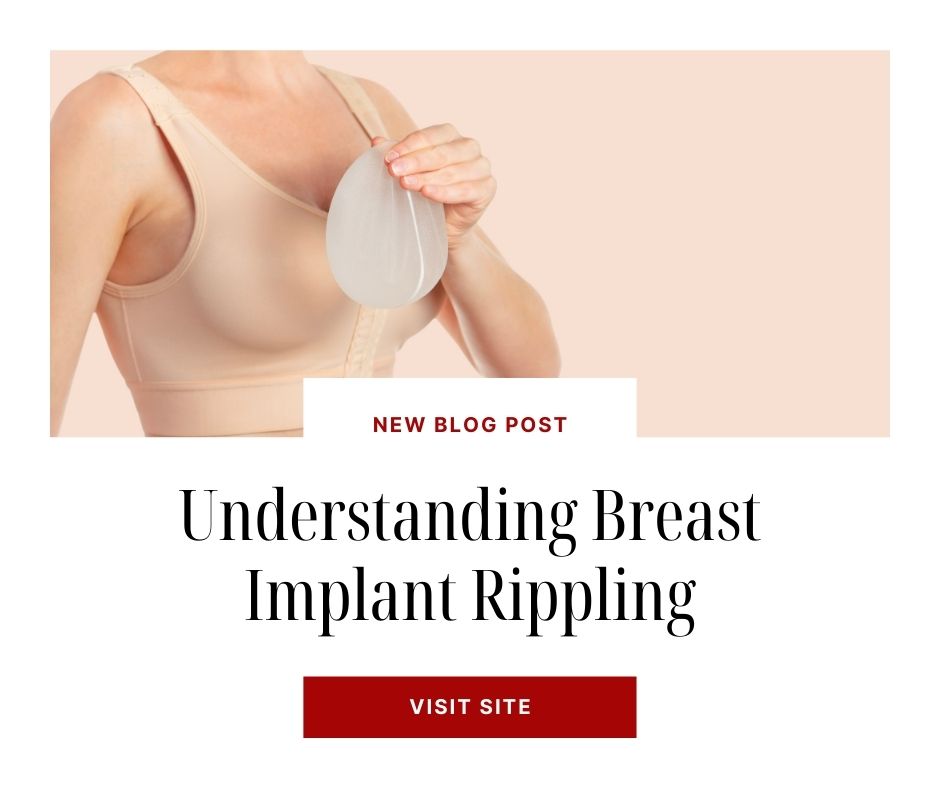
04 Oct Understanding Breast Implant Rippling: Causes and Prevention
Understanding Breast Implant Rippling
Breast augmentation is a popular procedure that can enhance both the shape and size of your breasts, boosting your confidence and helping you achieve the body contour you desire. However, like any cosmetic procedure, it’s essential to be aware of potential complications, one of which is breast implant rippling.
At Dr. Shaun Parson Plastic Surgery in Scottsdale, AZ, we believe in providing our patients with all the information they need to make informed decisions about their care. In this blog post, we’ll explore what breast implant rippling is, what causes it, and how you can reduce your risk.
What is Breast Implant Rippling?
Breast implant rippling refers to the visible or palpable folds or wrinkles that can occur on the surface of the breast implant, leading to an uneven appearance on the skin. Rippling is more commonly associated with saline implants, although it can occur with silicone implants as well. It can be particularly noticeable in women with thin breast tissue, as there is less natural tissue to cover the implant.
Causes of Breast Implant Rippling
Several factors can contribute to breast implant rippling, including:
1. Implant Type
- Saline vs. Silicone: Saline implants are more prone to rippling because they are filled with a saltwater solution that is less cohesive than silicone gel. This can cause the implant to fold or wrinkle, especially if underfilled.
- Silicone implants: Modern silicone implants are designed to be more cohesive, reducing the risk of rippling. However, if a silicone implant is too large or not properly placed, rippling can still occur.
2. Implant Placement
- Subglandular Placement: When implants are placed directly under the breast tissue (subglandular), rather than beneath the chest muscle (submuscular), there is less natural tissue to cover the implant. This can make rippling more visible, particularly in women with thinner breast tissue.
- Submuscular Placement: Placing the implant beneath the chest muscle can provide additional coverage, reducing the risk of rippling.
3. Implant Size and Fill
- Underfilling or Overfilling: Saline implants must be filled to the manufacturer’s recommended volume to avoid rippling. Underfilling can leave excess space inside the implant, leading to folds. Overfilling, on the other hand, can create tension on the implant shell, increasing the risk of rippling.
- Large Implants: Choosing implants that are too large for your body frame can also increase the likelihood of rippling, as there may not be enough tissue to adequately cover the implant.
4. Breast Tissue Thickness
- Women with thinner natural breast tissue are more susceptible to rippling, as there is less tissue to mask any imperfections or folds in the implant.
5. Aging and Weight Fluctuations
- Over time, natural aging or significant weight loss can cause the breast tissue to thin, making rippling more noticeable.
How to Reduce the Risk of Breast Implant Rippling
While breast implant rippling can be a concern, there are steps you can take to minimize the risk:
- Choose the Right Implant: During your consultation, Dr. Parson will discuss the best type and size of implant for your body. Silicone implants are generally less prone to rippling, and cohesive gel implants can further reduce the risk.
- Consider Implant Placement: Opting for submuscular placement can provide more coverage for the implant, decreasing the chance of rippling.
- Proper Filling: Ensuring that saline implants are filled to the appropriate volume can prevent the implant from folding or wrinkling.
- Maintain a Stable Weight: Avoid significant weight fluctuations that could lead to thinning of the breast tissue over time.
- Regular Follow-ups: Keep up with your follow-up appointments to monitor your implants and address any concerns early on.
Conclusion
Breast implant rippling is a possible but manageable complication of breast augmentation. By understanding the causes and taking proactive steps in consultation with Dr. Shaun Parson, you can make informed choices to reduce the risk and achieve beautiful, natural-looking results. If you have any concerns or questions about breast augmentation, don’t hesitate to reach out to our office in Scottsdale, AZ. We’re here to guide you every step of the way. For before and after photos of breast augmentation procedures click here.
Contact us today at 480-282-8386 to schedule your consultation and explore the options that are right for you.
For more information read more articles here.
